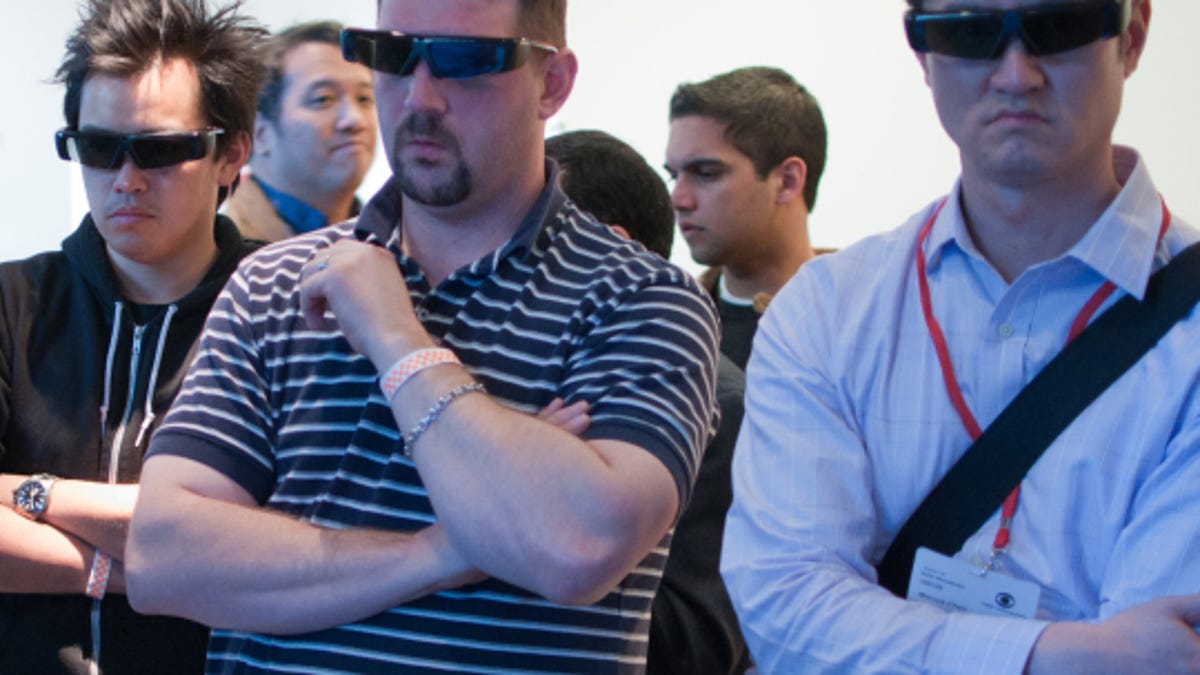3D TV: A proposal on behalf of the stereo-blind
There's an easy way to make 3D work for people who can't see it. But no one is doing it.

3D TV effects are wasted on a portion of the population, about 4 percent to 10 percent of us. When shown 3D content, some people in this group see double or blurry images, or suffer from eyestrain or headaches that makes the content unenjoyable, to say the least.
If you're in this group, as I am, there is a solution: You can turn off the 3D feature on your TV, and watch the content "flat." If it's a movie you're interested in, find a theater that's showing it in the cheaper non-3D version. Nvidia's new 3D-capable video cards for PCs won't even show you 3D content if you fail a 3D vision test. They revert to 2D-only mode.
This is all well and good if you're the last person on earth and watch your content alone. What do you do, though, if you want to see a show with other people who are not stereo-blind? There's a very simple solution. It's so simple that I'm rather surprised that it's not evident everywhere. This is it: create "3D glasses" that convert 3D images to flat images.
3D glasses work by taking two different moving images, one meant for the left eye and one the right, and displaying each image only to the eye it's intended for. 3D TVs work with battery-powered "active-shutter" glasses to direct alternating images to the right and left eyes by literally turning black and clear to block and then transmit images. In most 3D-movie theaters, differently polarized images pass through correspondingly polarized lenses for separation. The brain uses the differences between the two images to build a 3D model of what the eyes are seeing. For most people, this results in a vivid 3D image on the screen. For the stereo-blind, either the brain doesn't do the image processing correctly, or there's a vision problem that prevents the brain from getting two images that can be processed together into convincing 3D.
For the stereo-blind, the simple way to flatten the image, and make 3D watchable, is to present the same moving image to both eyes, and to discard the other. Technologically, the flattening glasses would be extremely easy to create. Active-shutter glasses could simply block, say the right eye's image, and present the left's to both eyes. A simple "2D only" switch on the glasses would be all it takes.
Passive (polarized) glasses, could simply be made with identical lenses for both eyes, instead of different ones over each. At a movie theater, their frames could be starkly color-coded (say, yellow, instead of the typical black) so customers would know which glasses to use. I may hack together my own passive glasses from two pairs appropriated from the next 3D movie I see, in fact.
None of the vendors I reached out to with this idea would offer a comment on it. I'm disappointed by that, and in writing this column I call out to them publicly to respond to the needs of the stereo-blind. As someone who is stereo-blind, I don't want to spend the next 15 years of my life taking my son to 3D movies that I can't enjoy. But I will happily put on goggles to convert his 3D experience into a flat one for me, just so I can sit next to him.

